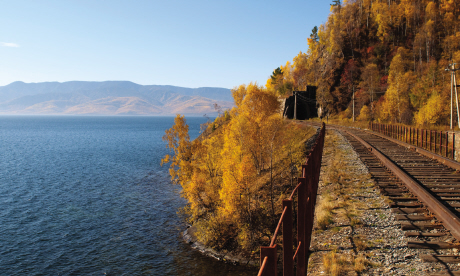
Jump off the train: for ornate churches, crystal waters and mountain market towns check out these top ten stops
Vladimir and Suzdal are the most accessible of the Golden Ring towns (the birthplace of the modern Russian state) if travelling on the Trans-Siberian Railway. Vladimir, 178km from Moscow, was the capital of the Rus empire from the late 10th century. It is now the jumping-off point for one of Russia's loveliest churches, the Church of the Intercession of the Nerl near Bogolyubovo.
Suzdal , 35km from Vladimir, has the largest number of churches per capita in Russia and presents an idyllic picture of Russian village life: goats and chickens roam the streets, cattle graze in the meadows and children fish from wooden bridges.
The city of Perm was the inspiration for Pasternak's Yuryatin in Dr Zhivago and is the gateway to Siberia. Lying in the foothills of the Ural Mountains it is an industrial city of just over one million people. The surrounding area is good for hiking and skiing and some operators offer whitewater rafting trips.
Yekaterinburg's role in shaping Russian history is immense, ushering in the Socialist era in 1918 with the murder of the Romanov family and giving the country Boris Yeltsin. The Afghanistan War Monument, or Black Rose, is also a key figure, marking losses from the 1979-1989 war.
With a population of just under 1.5 million, Novosibirsk is Siberia's largest city and its industrial centre. Among the Trans-Siberian cities that foreigners usually visit, Novosibirsk is the one with the least to offer a relatively young city and has few buildings of historic interest, although there's a good railway museum outside the city.
Tomsk is a university town with some finely preserved wooden architecture. Around 270km north-east of Novosibirsk, it is a good place to get away from the big cities on the main Trans-Siberian line. There's an intellectual and open atmosphere that's hard to find elsewhere in Siberia, and while it's very laid back, Tomsk will surprise you with the refinement of its restaurants and nightlife.
Irkutsk is the most popular stop for Trans-Siberian travellers. In this city, which was once known as the Paris of Siberia, you'll find people rather more friendly and relaxed than those in European Russia. Along many of the streets you can still see the cosy-looking log cabins (eaves and windows decorated with intricate fretwork), which are typical of the Siberian style of domestic architecture.
The Trans-Mongolian route takes you via UlaanBaatar, the relaxed capital of Mongolia and a great place to spend some time. The country is a haven for adventure-seeking travellers, with Ulaanbaatar's many guesthouses serving as their base. One more day on the train brings you to Beijing, the rapidly developing host of the 2008 Olympics.
Some 64km from Irkutsk is Lake Baikal, set within some of the world's most beautiful countryside. The lake is 1,637m deep and estimated to contain roughly 20% of the world's fresh non-frozen water supplies. Known as the Blue Eye of Siberia, it is also the world's oldest lake, formed almost 50 million years ago. The water is incredibly clear and, except around Baikalsk and the Selenga Delta, completely safe to drink due to the filtering action of numerous types of sponge that live in its depths. This outdoor paradise also provides trekking, camping, boat excursions, diving and riding.
East of Lake Baikal, Ulan-Ude is the capital of the Buryatiya Republic and well worth a stop to visit Ivolginsky Datsan Monastery. Located 23km away in peaceful Ivolga, this is the centre of Russian Buddhism.
Chita is a provincial city with a large military presence but well off the tourist trail. Two days east of Chita is Khabarovsk, a relaxed provincial city situated on three hills above the junction of the Amur River and its tributary, the Ussuri. Ten hours further south is the end of the line, Vladivostok.